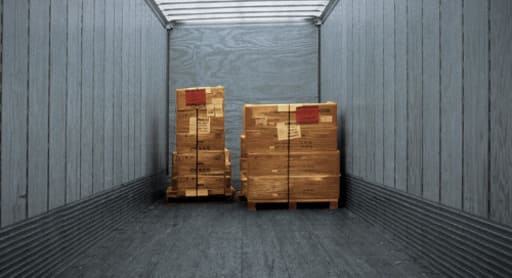What’s the Difference Between LTL and Full Truckload Freight?

If you have shipments of 10 euro pallets or less in your network, using less than truckload (LTL) could be a great way to reduce costs while improving efficiency. If you have some experience shipping full truckload (FTL) freight but are relatively new to LTL, it’s important to first understand a few key differences between the two modes.
What is Full Truckload (FTL or TL)?
- Most common equipment is a 13.6-meter tautliner (euroliner) or refrigerated trailer.
- Only one shipper’s freight moves on the truck.
- Shipper does not necessarily fill the entire truck but has exclusively reserved the full capacity of the truck.
What is Less Than Truckload (LTL)
- Multiple shippers’ freight moves together on the same trailer (groupage or part-, co-load)
- Groupage and vans are ideal for shipments ranging from one to 10 pallets.
- Shipments over 8-10 pallets that do not require the whole space on a trailer are typically a candidate for part load / co-load.
When should I use LTL? When should I use Full Truckload?
These are not hard-and-fast rules, but guidelines. Generally speaking,
Use Full Truckload when
- You are shipping over ten pallets at one time.
- Your product is extremely fragile or delicate.
- You require firm pick-up and delivery appointments.
- Delivery date is extremely time-sensitive.
Use LTL when
Groupage
- You are shipping ten pallets or less.
- Your product is sturdy enough (or properly packaged for) increased handling.
- You have a little bit of flexibility with shipping and delivery timing.
- You want to save money.
- Traceability isn’t a priority
Vans
- You are shipping ten pallets or less up to 1000kg.
- Your product needs to be moved as quickly as possible
- You are looking for a solution to be executed in low-lead time situation
- Your goods have to be collected and delivered within given timeslots
- You want to have full visibility of your consignment – ease of high-quality track/trace capabilities
Similarities Between Full Truckload and LTL
- Both move freight primarily over the road
- Both utilize tautliners (euroliners), though some LTL freight will be moved with vans.
- Both modes primarily ship palletized freight.
Differences Between Full Truckload and LTL
LTL’s core value is cost savings. If you’re only shipping a few pallets, it’s usually cheaper to use LTL instead of paying for a full truck. To support their economical pricing strategies, LTL carriers need to maintain optimal efficiency at all times—long delays, empty kilometers, non-standard services and underutilized trailer space have a disproportionate impact relative to their full truckload peers, creating some key differences between the two modes.
Increased Freight Handling
- Full Truckload: The shipper loads product at origin, pops a seal on the trailer and the driver takes the product straight to the destination for delivery.
- LTL: Throughout the course of groupage LTL shipment, you can expect your product to be loaded and unloaded in-and-out of trailers and warehouses several times before it reaches the final destination. Though an overwhelming majority of LTL shipments are delivered in perfect condition, the increased handling means greater exposure to potential product damage compared to truckload. It’s important to properly package and protect your product for LTL shipping.
Accessorials
- Full Truckload: You essentially have the undivided attention of a driver from pick-up through delivery. Since a single load is usually several days of work for a driver, full truckload carriers tend to be a little more forgiving with accessorials—15 minutes of detention or driver assist in the course of a three-day transit isn’t as big of a deal.
- LTL: You are only paying for a small portion of capacity in a trailer, and it’s spread across several drivers and warehouses. As previously mentioned, LTL carriers need to maintain optimal efficiency to support economical pricing structures—anything that causes a delay or disruption will usually result in additional charges. When this occurs, it’s important to remember the total cost savings versus full truckload.
Appointments
- Full Truckload: Drivers will accept firm appointment times.
- LTL: Drivers are almost always completing multiple pick-ups and/or deliveries per run—flexibility is important. Pick-ups within a facility’s operating hours are the industry standard, and appointment windows are not always guaranteed. In contrast, van drivers will often accept firm appointment times because they use dedicated vehicles.
Trailer Size
- Full Truckload: Most carriers have 13.6-meter curtain siders. Trailers are typically 2.45-meter wide with a 2.45/2.70-meter clearance height.
- LTL: most carriers also use 13.60-meter trailers for groupage and part-load, but some also use different sized smaller trucks. With regards to vans the standard is a 4,2-meter long, 2,2-meter wide vehicle with a 1,7-2,2 meter clearance height.